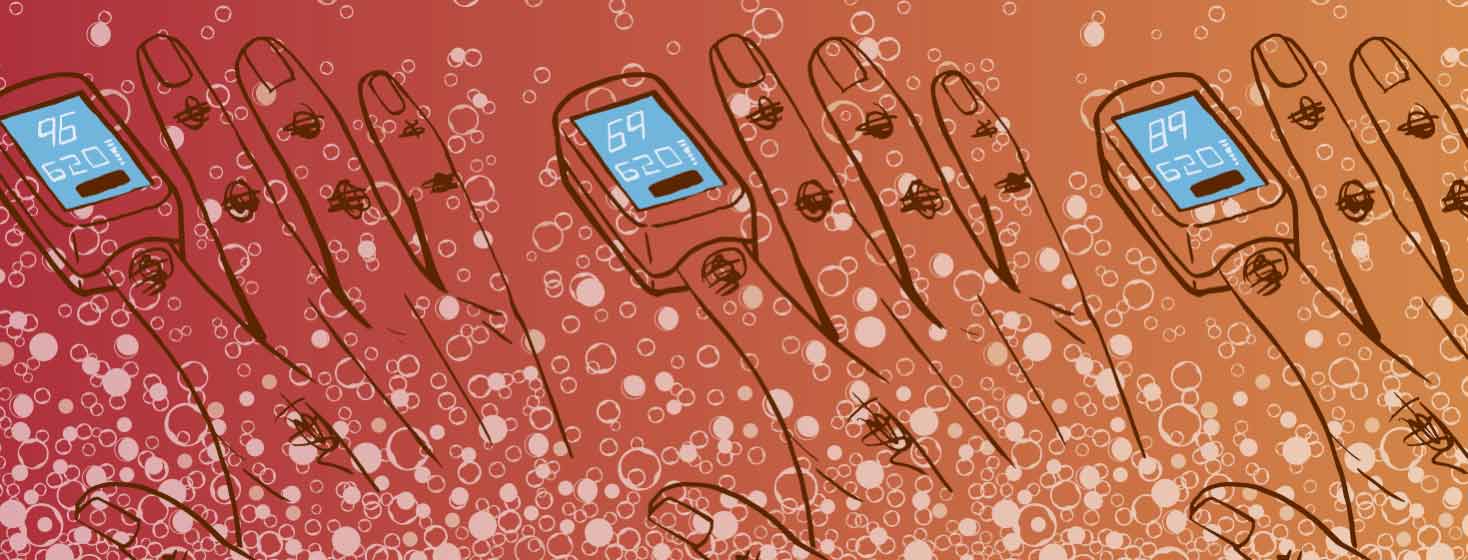Do You Need A Pulse Oximeter?
Most of us are familiar with the four vital signs: respiratory rate, heart rate, blood pressure, and temperature. Of course, most of us are also familiar with what is now commonly referred to as the fifth vital sign: oxygen saturation. This is determined by slipping a small pulse oximeter probe over your finger. So, what is oxygen saturation? What are pulse oximeters? Do you need one at your home? Here’s all you need to know.
What are pulse oximeters?
A pulse oximeter (pulse ox) is a device that measures oxygen saturation. It is a simple device that uses a probe that slips over your finger. Infrared light is sent from one side of the pulse oximeter probe, and through your finger. Some of the light is absorbed by your capillaries. The remainder of the light returns to a sensor on the other side of the probe. The light returning determines both your oxygen saturation and your heart rate. This can be done in a matter of seconds.1
What is oxygen saturation?
Oxygen saturation (O2 Sat, Sat) is a measure of the amount of oxygen that you inhale that makes it to your blood. Inside your blood is a protein called hemoglobin. Once inside your blood, oxygen attaches to hemoglobin. This is how oxygen travels through your blood to all the tissues of your body. Oxygen saturation is a percentage of hemoglobin saturated with oxygen. 1-2
What is normal oxygen saturation?
So, your oxygen saturation is measured as a percentage. For instance, 98 percent is normal oxygen saturation. The American Thoracic Society considers 89 percent or higher is acceptable. Less than that may mean that some of your tissues may not be getting enough oxygen to do their work.2
For some people with lung diseases, a normal oxygen level may be considered 88 percent or higher. Your doctor can help you determine what is normal for you.
Oxygen saturation is also a harmless, and painless, way to monitor your oxygen levels. To understand more about oxygen levels, check out my post "What Are Safe Oxygen Levels?
What types of probes are there?
In the hospital setting, we need to have a variety of probes. This is important, as we need to get accurate oxygen sats in various different situations. Where I work, the two most common types of probes are finger probes or ear probes. Finger probes fit over your finger. Although, they may also fit over a toe if needed. Ear probes slip easily over any part of your ear.
Some probes are connected to larger pulse oximeter devices. Some are stand-alone devices that may sit at the bedside. Others are hand-held and portable. There are also electronic "finger probes" available. These units are about the size of a small candy bar, are lightweight, and can easily fit into pockets or purses. It is these units that have gained popularity in recent years, especially as their prices have dropped to affordable ranges.
How are pulse oximeters used in the hospital?
Pulse oximeters are used by many healthcare providers. Every time you go to your doctor's checkups a pulse oximeter probe may be slipped over your finger. The same is true when you enter a hospital. This is a great way for doctors to monitor your oxygen saturation. If it’s low, your doctor may refer you for further testing. If it is too low, your doctor may recommend you go to the hospital.
In the hospital setting, you will have your pulse ox measured every step of the way. If it remains low, we may have you wear oxygen. We have small pulse oximeters where we can spot-check your oxygen saturation as needed. Although, we also have devices with pulse oximeters that can monitor your oxygen levels continuously. By monitoring your oxygen saturation, we know when to put you on oxygen, when to increase your oxygen, or when you no longer need it.
In the hospital, we also do a variety of tests. We do oxygen qualification tests to see if you need oxygen at home. Here your oxygen saturation will be monitored at rest and with exertion. We also do sleep studies where you wear a pulse ox probe while you are sleeping. This can help determine if you need oxygen at night. To learn more, check out my post, "How to qualify for home oxygen?"
Should you buy a pulse oximeter for your home?
This is probably a question best discussed with your physician, nurse, or respiratory therapist. Any of these professionals can help you determine if you should have one at your home. Although, in some instances, your doctor may prescribe one for you, or at least recommend you buy one.
Your doctor can help you determine how best to use your pulse oximeter. If your oxygen sat drops to a certain level and stays there, your doctor may recommend wearing your oxygen. If you are already wearing it, your doctor may recommend increasing it. In some instances, your doctor may recommend that you call 911.
How do I find one?
In the past, pulse oximeters were expensive and only used in the healthcare setting. Today, you can find finger pulse oximeters that are very affordable. They are lightweight and small enough to fit into your pocket or purse.
I recently did a Google search for such a pulse oximeter. I found that there are many different brands on the market. I found one on Amazon that I purchased for only $20. I don’t think it really matters what brand. Although, I would highly recommend only purchasing one that is FDA-approved. This is because, to gain FDA approval, a product must be run through a gamut of tests to make sure it is both accurate and durable.

Join the conversation